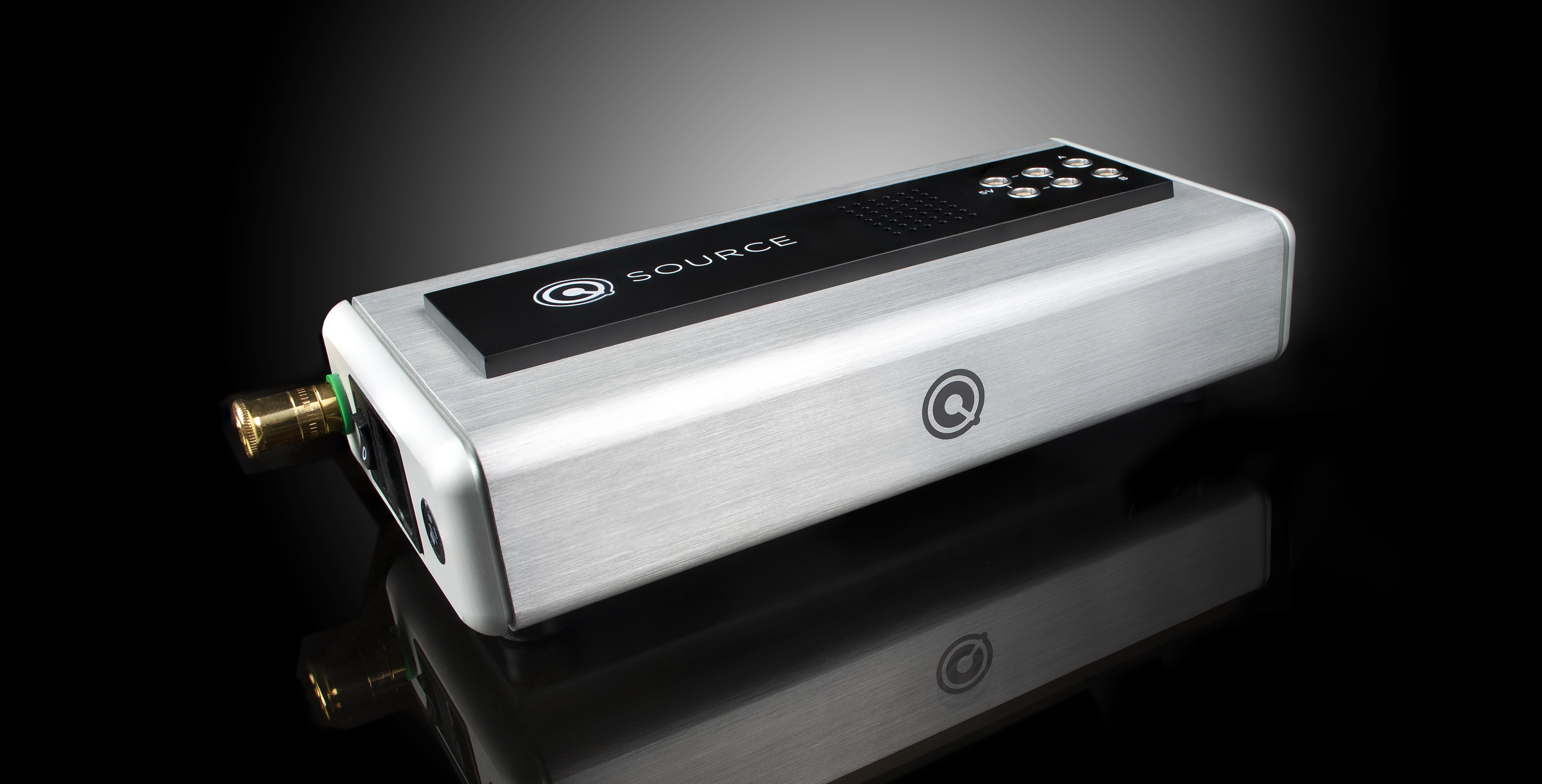We thought that we would take the opportunity to share some of our most recent and frequently asked questions about the QSOURCE Linear Power Supply here, so that everyone can get the answers they are looking for!

I have seen the QSOURCE used with the new QPOINT Resonance Synchronizer in reviews, but can it be used with other components too?
The QSOURCE serves as an upgraded power supply for Nordost’s QPOINT Resonance Synchronizers, and is constructed with four, 5V outputs designated specifically for QPOINTS. However, it was also designed as a replacement for the noise-inducing, inconsistent switch mode power supplies that feed music servers, network switches, routers, NAS drives, DC phono stages, DC DACs etc. To accommodate these devices, the QSOURCE provides two outlets that can supply “9V, 12V, or 19V” and “12V, 19V, or 24V” respectively, which can be chosen to match the requirements of your electronics.
Where should I place the QSOURCE in my system? Do I have to plug it into my distribution bar, or can it be plugged directly into the wall?
While you can certainly plug the QSOURCE into your distribution bar, if you don’t have any space available on your QB4, QB8, or whatever product you use in your system, you can plug the QSOURCE directly into the wall. In terms of placement, the QSOURCE can be positioned anywhere on or around your audio rack in a well-ventilated space. Just make sure that the vents both on the top and bottom of the unit are unobstructed at all times.
Is there a difference between the QSOURE DC Cables that you use to power the QPOINT and the QSOURCE DC Cables you use to power other components?
While the cable itself is the same, Nordost offers three termination options for the QSOURCE DC Cable: LEMO to LEMO, LEMO to 5mm x 2.1mm barrel connector, and LEMO to 5mm x 2.5mm barrel connector. The LEMO to LEMO connectors are intended for use with Nordost’s QPOINT Resonance Synchronizers. When connecting any other device to the QSOURCE, you have to verify the required termination for your device from its manufacturer.
Do you need to own a QSOURCE in order to use your QPOINT?
No, when you purchase a QPOINT it comes with a switch-mode power supply so that you can use it immediately, without any additional purchases. However, if you want to get the most out of the QPOINT, we suggest that you introduce a QSOURCE Linear Power Supply into your system for a significant upgrade.

The QSource needs a Power Cord? It is included in the Qsource or shall be purchased separately? Which power Ford do you recommend for the Qsource?
Thanks for the reply.
Yes, the QSOURCE requires a separately purchased power cord. You should choose the a power cord that is in align with the other cables and components in your system. We have had wonderful results with all of the power cords that we offer, all the way to our entry level Blue Heaven Power Cord.
Hello,
unfortunately there are only two connections for external equipement. As you state, it would be for music servers, network switches, routers, NAS drives, DC phono stages, DC DACs etc, so there are already mentioned SIX (without the etc.). In my setup there would be nine overall, but only three in the main listening-chain, NAS, Roon, switch. But I couln’t even feed those, as the NAS requires 12V10A (120W, not 20), Roon 19V3,42A is just there (you offer 3,47A with the 66W) The switch needs 5V1A, and as I understand, all four 5V together only provide 1A = 5W, so I guess that it’s no good to plug it there plus 3 Qpoints.
Please think of adding a more powerful and more versatile version, more connections, more power, this woud be likely to meet the requirements of High End listeners with complex equipement, who are the ones willing to spend a lot for the undeniable improvements, your products provide.
Thanks for a comment, best regards, Michael